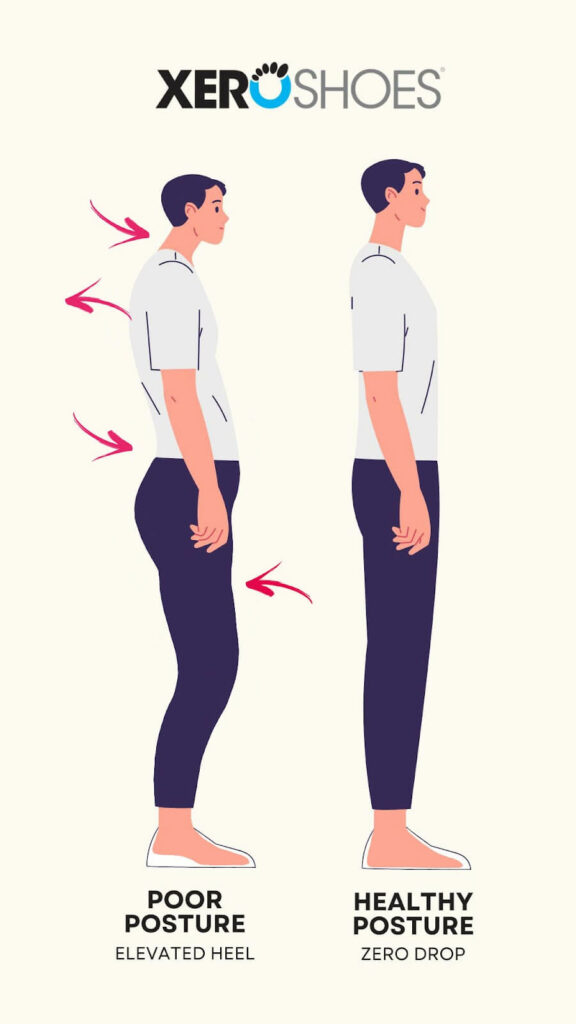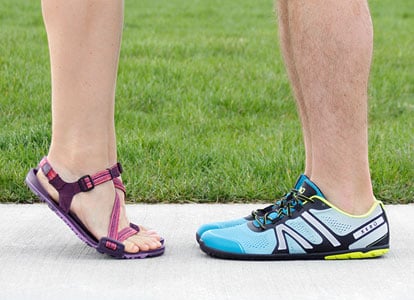In our contemporary society, the act of slipping on shoes before stepping out has become as routine as donning underwear. Rarely do we ponder beyond the aesthetic appeal of our footwear choices, gravitating toward patterns, colors, and designs that match our preferences. But beneath this seemingly innocuous habit lies a lesser-known narrative about footwear—an industry rife with hidden truths and untold stories.
Did you realize that the shoes you wear hold the potential to alter your posture and back alignment significantly? I, unfortunately, learned this firsthand through a series of unanticipated health issues resulting from my ignorance on the subject.
During my younger years, I worked as a meter reader for an electric company. As I traversed around 4 to 5 miles daily, predominantly on concrete city streets and occasionally leaping over fences (not endorsed by the company, but expedient for the job), I began experiencing excruciating knee pain. Confounded by the cause, I discovered that my choice of footwear (hinted by the familiar ‘swoosh’ symbol of a prominent brand, but left unnamed) and accompanying insoles were drastically affecting my knee biomechanics. They tilted my knees outward, causing immense discomfort with every step.
Surprisingly, a staggering revelation emerged: the majority of shoes—approximately 9 out of 10 pairs available in the market—tilt individuals forward. This tilting is facilitated by the slightly elevated heels in these shoes, often perceived as a luxurious feature providing cushioning to the feet. However, this ‘luxury’ considerably alters one’s posture compared to being barefoot, as the elevated heel naturally pushes the knees forward.
Notably, renowned brands like Nike, Adidas, Sketchers, Puma, and New Balance focus primarily on aesthetics rather than prioritizing posture in their shoe designs. Consequently, individuals grappling with posture-related concerns, knee pain, or back issues are advised to steer clear of these brands to avert exacerbating their conditions.
Moreover, a contemporary shoe design trend—constricted toe space—restricts the natural width of feet, contrasting starkly with the freedom of unshod or minimally encumbered feet. This constriction impedes foot expression and natural movement, evident in the difference between ballet dancer feet and those of individuals from underdeveloped regions unaccustomed to wearing shoes.
Understanding these dynamics underscores the importance of opting for footwear that closely mimics the experience of walking barefoot. ‘Barefoot minimalist shoes,’ meticulously crafted for posture and biomechanics, emerge as the optimal choice.
Read: When You Should Stop Wearing Hoka Shoes Immediately (Even Though They’re “Comfortable” To Wear)
How Elevated Heels Harm Posture
Elevated heels harm posture as they push the knees forward. This then harms the posture of the body and the whole kinetic chain. This graphic from Xero shoes illustrates this well:

Having explored various barefoot minimalist shoe brands, I have unequivocally found Xero Shoes to be exceptional. Their commitment to barefoot and minimalist designs transcends comfort and freedom, offering an unparalleled experience that aligns seamlessly with the body’s natural movements.
For those seeking not just footwear, but a conscious lifestyle choice prioritizing health and posture-conscious living, Xero Shoes (link) embody the perfect solution. They symbolize a departure from conventional shoe paradigms, emphasizing functionality over fleeting fashion trends.
Undoubtedly, the impact of footwear on posture becomes evident when considering the elevated heel’s influence on knee alignment and the adverse effects of toe constriction on movement patterns.
In my journey through various shoe experiences, the Xero Prio Shoes have stood out as the pinnacle of comfort and functionality. Having owned a pair myself and even worked at a shoe store during my high school years, this particular pair holds a special place due to its unmatched quality and comfort.
Read: 9 Walking Mistakes You Didn’t Know You Were Making
To embark on a journey towards better posture, natural biomechanics, and holistic well-being, consider embracing Xero Shoes—an embodiment of the perfect marriage between health-conscious functionality and unparalleled comfort. The Best Part About Xero Shoes:
Three key differences set xero shoes apart from the rest and these are notable differences that you will feel on your fit once you slip your first pair of xero shoes on.
First, the shoes have a wider toe box. This is the front of the shoe. The wider the toe box, the more left-to-right room your toes have to move. This is good for balance and strengthening your toes instead of crunching your toes and pushing them together. You actually develop more strength, flexibility, and mobility with your toes. Just like a chair that has four legs has better balance than a chair with three legs, the further spaced out your toes are, the better balance you’ll have.
Second, the shoes are flat, and the heel is not elevated. An elevated heel causes you to have a tilted forward posture as you can see in this video:
This simply allows you to stand tall and stand straight. This can also be correlated with back tightness or challenges that you might face if you were wearing shoes that pushed your posture forward.
Third, these shoes are incredibly lightweight. It feels like you’re walking on a cloud of air. This mimics barefoot walking and allows you to be light on your feet. This is good because you have a better connection to the ground beneath your feet. There are many nerve endings at the bottom of your feet, and the more connected you are to the earth beneath your feet, the less likely you are to trip or fall.
I have found a few changes myself firsthand by switching to Xero shoes. First, I have stronger and more flexible ankles and legs. I’ve landed on my ankle oddly a few times, and in my old Nike shoes, I would have sprained my ankle because I have played sports for years, and playing basketball, football, or hiking has led to a strain in these scenarios.
Ever since wearing Xero shoes, I have not sprained my ankle ONCE. I’m not promising that you won’t sprain your ankles, but I have landed awkwardly and have not sprained them. My belief is that since I have retrained my ankles to have more flexibility, mobility, and strength, I have made my ankles more injury-proof.
This is simply because the more flexible and mobile you are, the less likely you are to be injured. Ask any personal trainer who knows what they’re talking about, and they will tell you this is true. Injuries come from not being flexible or mobile or a muscular imbalance.
For all these reasons and more, I highly recommend Xero shoes. You can visit them at XeroShoes.com by clicking here.
You’ll be glad you did!
Keep Reading: The Forgotten Art Of Squatting: An Antidote For Damage Done To Our Bodies From Sitting?
Sources:
- “Influences of heel height on human postural stability and functional mobility between inexperienced and experienced high heel shoe wearers” PeerJ. October 28, 2020

